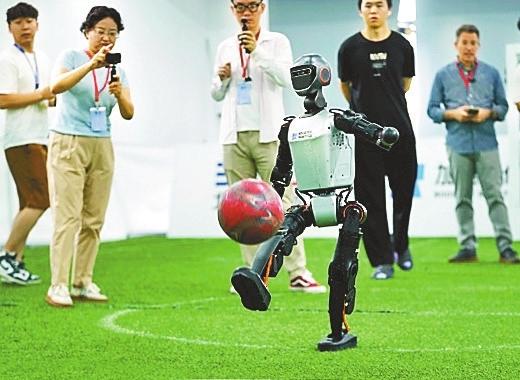
IN the world of robot sports, China isn’t just playing the game — it’s rewriting the rules. At this year’s RoboCup, held in Salvador, Brazil from Thursday to Sunday, Chinese humanoid robots ran, kicked, and punched their way to victory in the adult-size humanoid robot division, showcasing what happens when high tech meets sci-fi ambition. Tsinghua University’s Team Hephaestus defeated Team Mountain Sea from China Agricultural University 5-2 in the final match. From the outset, the playing field was tilted in China’s favor — of the four teams in the division, three were from China. Even the sole U.S. team used a Chinese-made robot, underlining China’s overwhelming presence in the competition. Cheng Hao, founder of Booster Robotics, the official hardware supplier for the event, said the tournament marked a turning point. “For the first time, a China-made robot, thanks to its performance and developer-friendly tools, became the go-to equipment for a top-tier global competition. China’s robots have now become a major player in the world arena,” he said. Since its inception in 1997, the RoboCup Robot Soccer World Cup has evolved into the world’s highest-level, largest, and most influential robotics tournament. The humanoid group event (RoboCup Humanoid) has drawn the most attention among all competitions. In the 3v3 team matches, the robots play soccer autonomously — without human intervention. They require lightweight, flexible, and durable bodies, as well as complex real-time perception and decision-making capabilities, advanced motion control, and multi-agent collaborative tactics. This represents a comprehensive test of full-stack robotic technology. The competition carries the ambitious vision of developing robotic soccer players capable of defeating a human World Cup champion team by 2050. While China’s aspirations to become a soccer powerhouse remain unfulfilled on traditional fields, it has steadily established itself as the global standard in robot football, backed by substantial investments and government-backed initiatives. In April, a humanoid robot named Tiangong — standing 180 centimeters tall and weighing 55 kilograms — completed a half-marathon in Beijing in 2 hours, 40 minutes, and 42 seconds. Of the 21 Chinese robots entered in the race, six successfully finished. In May, Hangzhou hosted the world’s first humanoid robot combat competition. Unitree, one of China’s leading robotics firms, supplied its G1 humanoid as the official competition robot. Despite some glitches, the tournament yielded valuable data for future development, according to the company. The World Humanoid Robot Games, scheduled from Aug. 14 to 17 in Beijing, promises to be a “Robot Olympics,” featuring 100-meter and 400-meter sprints, hurdles, football, and martial arts.(SD-Agencies) | 
